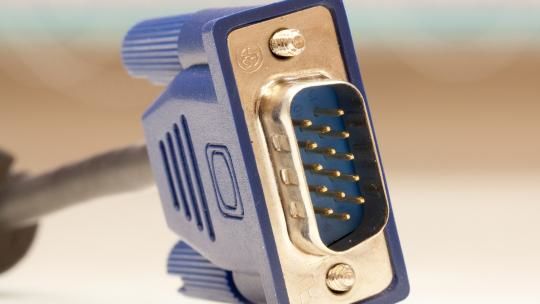Presentation Mode
I do a lot of PowerPoint in my job, and have done ever since I moved out of being a full-time sysadmin. Whether it was preparing the stage for a demo when I was in technical pre-sales, delivering RoI projections during my stint in sales, or big-picture context setting in marketing, the vehicle of choice always ended up being PowerPoint.
While life has got better over the years, one thing is still surprisingly difficult at times, and that is getting the presentation to show up with the prospect’s equipment. When you are presenting at an event, you typically have some time to go test all the A/V kit and so on, but when you’re pounding the pavement, you get shown to a meeting room and you have to plug in to whatever is there and be ready to go.

This is where the trouble can start. First off, we are still working with VGA connectors. While not a terrible connector for fixed equipment, it’s not ideal for laptops - and in fact, most modern laptops have followed Apple’s lead and dropped the VGA connector, usually in favour of HDMI1. However, only the best-equipped conference rooms offer HDMI (and vanishingly few have Mini DisplayPort), so this means that we all get to carry VGA dongles around.
Physical connection achieved, we have to cross our fingers and hope for decent resolution. SVGA - 1024x768 pixels - is still the lowest common denominator, so you have to make sure your slides look okay at that resolution. Getting the slides to work is the easy part, unfortunately; most modern software GUIs will struggle at that resolution. Make sure you do your warm-up exercises for you scrolling finger!
The Great Demo blog has a great set of tips for making sure your slides will work in unexpected situations. They’re mostly good suggestions, as is the rest of that blog, but I really take issue with the last point, which recommends disabling Presenter Mode.
I could not disagree more. I have never yet seen a situation where Presenter Mode was the factor that made the difference between being able to work with a projector and not. However, I have often been in situations where having the ability to keep an eye on the time, see presenter notes, take a peak at the next slide, or even jump to a backup or optional slide without having to break the presentation flow, have been invaluable.
In fact, one of my pet peeves is at conferences or events where the organisers provide their own laptop instead of allowing you to connect your own. On the one hand, this avoids all the trouble with connecting the laptop to the projector in the first place - but on the other hand, it means that you’re not using your own setup. Nine times out of ten, the presentation laptop is in mirror mode, not Presenter Mode. During prep time, if I have the time I will switch it to Presenter Mode - and all too often, A/V staff will then switch it back to mirror mode.
It may well be that Presenter Mode is confusing to inexperienced presenters, but this means that our suggestion to them as seasoned presenters should be to learn it and love it, not just to turn it off. Sure, it’s a power user feature, so maybe don’t mess around with it in your first week on the job - but maybe you shouldn’t be giving customer presentations until you are confident enough to roll with that anyway.
That said, don’t allow it to turn into a crutch. Too much jumping around within a deck will confuse your audience. They will be aware of it even if they don’t actually see you doing it on screen. Also, if you are presenting in a webinar, you will almost certainly not be able to use presenter mode unless you jump through a lot of hoops. In that situation, the better and more robust solution is to have your presentation on a second machine (or my personal solution: an iPad) and a timer on your phone (muted!) to help you stick to your story thread and timing.
-
On the other hand I did have a Dell a few years ago with a DisplayPort outlet. No, not Mini DisplayPort - full-size DisplayPort. It looks like an HDMI port with one end squared off. I have never seen a single piece of DisplayPort hardware apart from that generation of Dell laptops. ↩